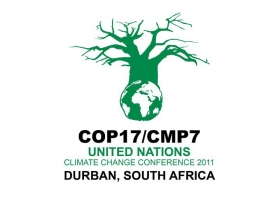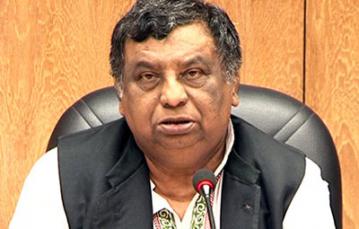 Global climate discussions have moved from Cancun to Copenhagen, and now to Durban, South Africa. They began last Monday in the hopes of finding a successor to the Kyoto Protocol, the global mandate that set targets for cutting carbon emissions. Kyoto was never ratified by the United States, the world’s leading carbon emitter, and did not apply to the large growing Asian economies of China and India.
Global climate discussions have moved from Cancun to Copenhagen, and now to Durban, South Africa. They began last Monday in the hopes of finding a successor to the Kyoto Protocol, the global mandate that set targets for cutting carbon emissions. Kyoto was never ratified by the United States, the world’s leading carbon emitter, and did not apply to the large growing Asian economies of China and India.
Durban began amid downplayed expectations that a worldwide agreement would take place, especially following the disappointing climate talks in Copenhagen. This may be a blessing in disguise in that it will force climate activists to pursue a different strategy. Rather than a top-down approach, some are now calling for local policies that would create incremental change.
The Kyoto Protocol was adopted in 1997 by nearly 200 industrialized countries, all of which pledged a decrease of 5.2 percent emissions from 1990 levels by the year 2012. Many countries met and some exceeded their pledge. Unfortunately, the countries which ratified the protocol only represent one third of global carbon emissions.
The European Union, one of the Kyoto signatories, is willing to extend their pledge, but will only do so if the other major economies jump on board to a new climate deal. The Durban climate talks are meant to make some progress towards that new deal by establishing financing mechanisms to help developing nations deal with global warming’s impacts.
However, the world-wide approach to a “grand deal” seems to be ever more futile. It is extremely difficult to get such disparate nations to agree on a new paradigm of such great magnitude. Instead, the future of climate deals will likely by a patchwork of measures taken by individual nations or regions.
Speaking of the global approach, James L. Connaughton, chair of the Council on Environmental Quality under George W. Bush, said, “The situation has never been weaker for that vision. On the other hand, there’s been quite a lot of progress bottom-up, country by country, in terms of setting reasonably ambitious goals and time frames.”
One recent example of this approach has been Australia, which has imposed a tax on carbon emissions for several major industries. By 2015, the land down under will transition to a carbon-trading system. Latin American countries from Columbia to Mexico are also considering new rules to decrease emissions from the cement industry to freight trucks. In the United States, 1,055 cities have pledged to meet the goal of a 7 percent emissions cut from 1990. The Northeast and mid-Atlantic regions have also banded together to form the Regional Greenhouse Gas Innitiative.
The Durban climate talks are not expecting to have any fireworks or a blockbuster, global agreement. In fact, their progress has already been hampered by the dubious release of more emails, dubbed “Climate-gate 2.0”. However, the talks are beneficial in that they keep the discussion going.
It would be important that something be resolved coming out of Durban to show that participating nations are still serious about climate change. That “something” may be a switch from top-down emissions mandates to a decentralized, local approach.
Source : cop17-cmp7durban.com




































